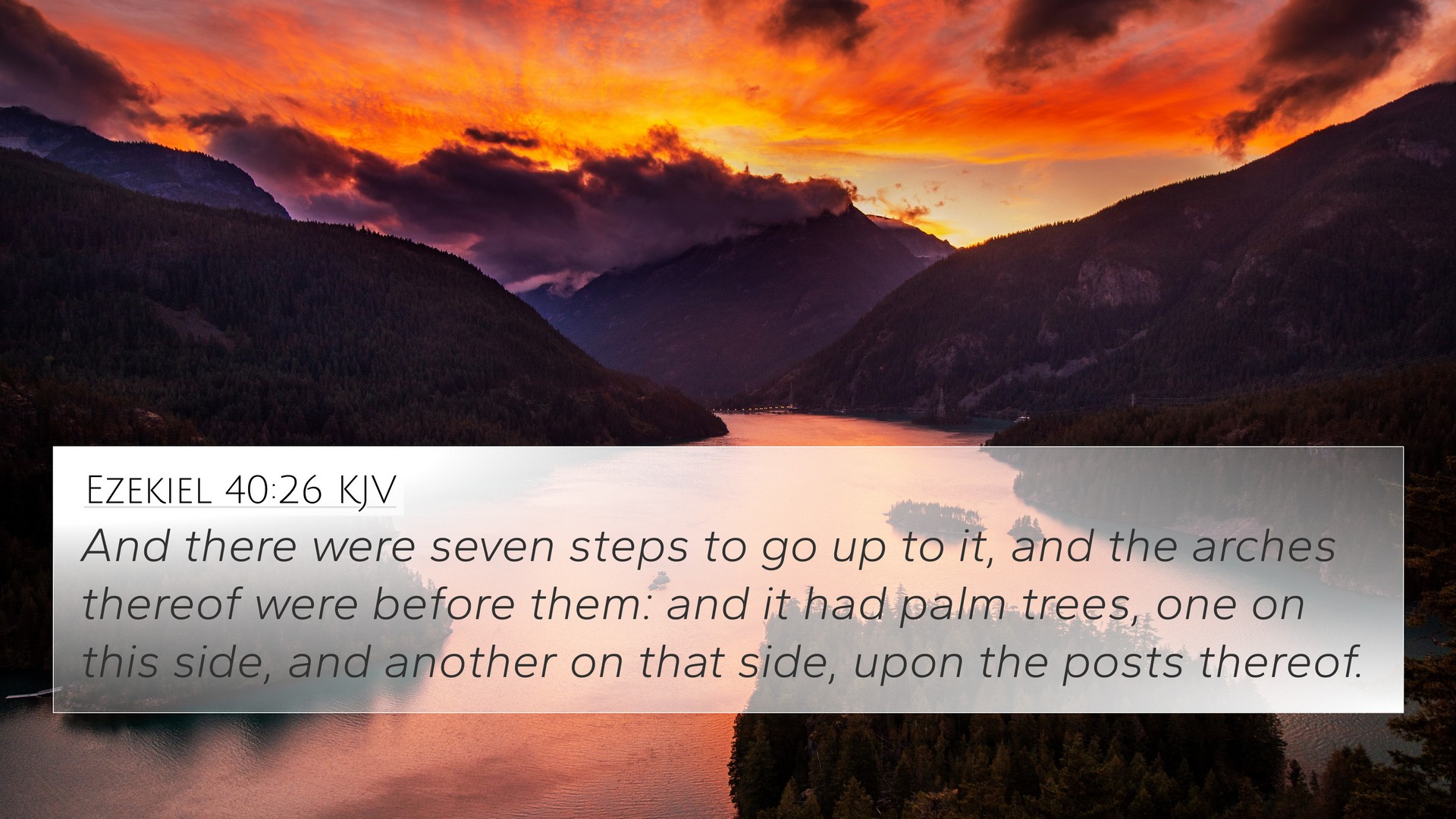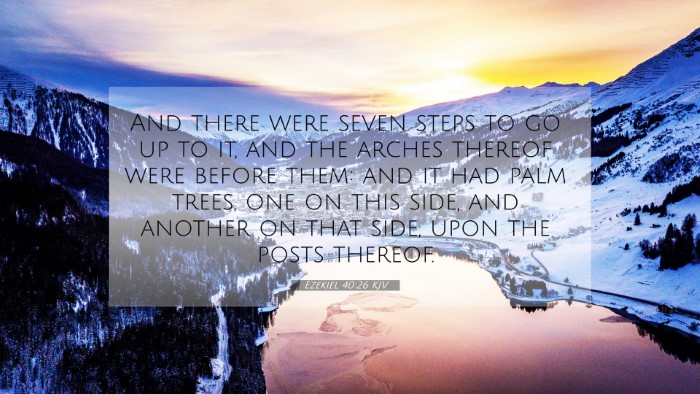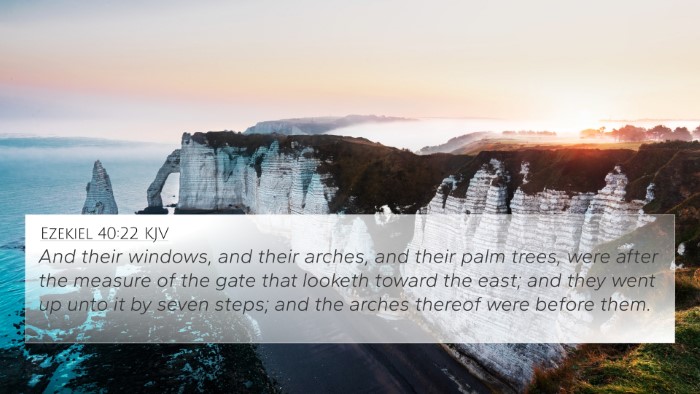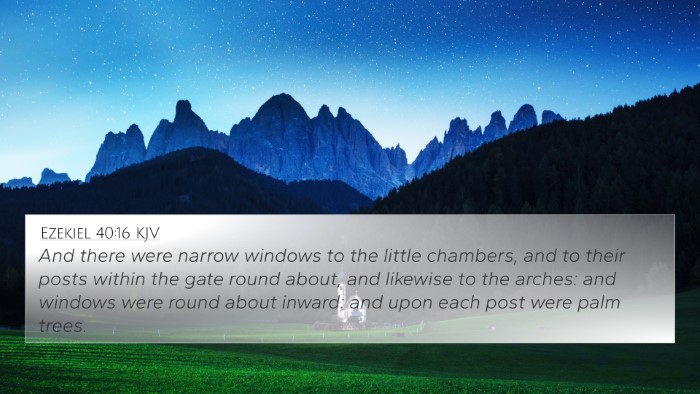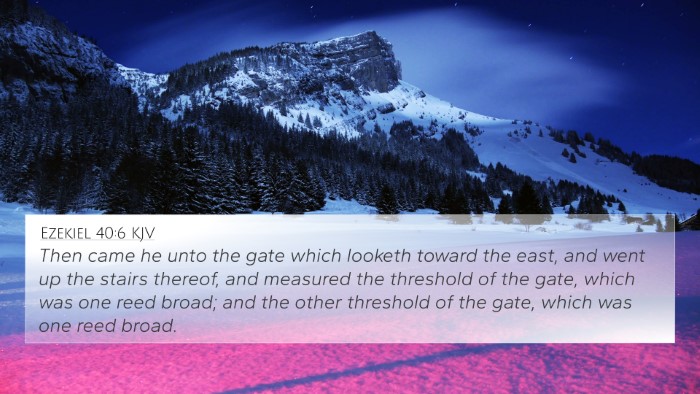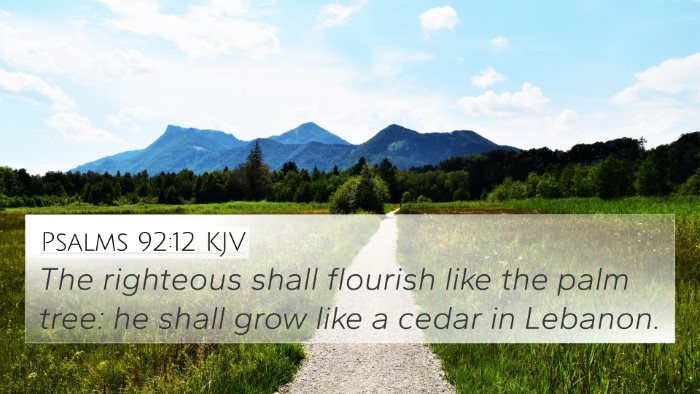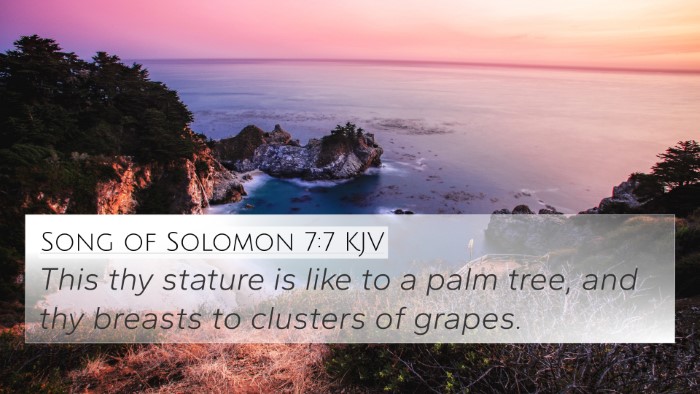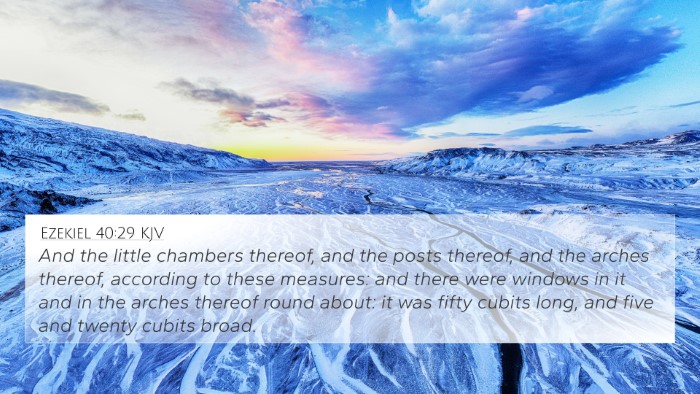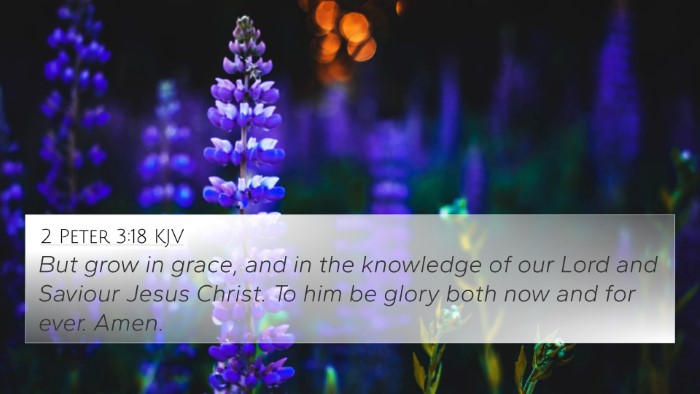Understanding Ezekiel 40:26
Ezekiel 40:26: “And there were seven steps to go up to it, and the arches thereof were before them: and the palm trees were upon the posts thereof, one on this side, and another on that side: and the going up to it had eight steps.”
Summary of Ezekiel 40:26
Ezekiel 40:26 is part of a larger vision given to the prophet Ezekiel concerning the restoration of Israel and the future temple in Jerusalem. This specific verse describes the design of the temple's entrance and emphasizes the grandeur and holiness of the structure.
Contextual Analysis
- This verse appears in a section that details the measurements and attributes of the new temple.
- The emphasis on steps and palm trees signifies accessibility and beauty in God’s dwelling place.
- It also serves to highlight the contrast between the previous, more mundane temple and the upcoming glorious restoration.
Commentary Insights
Matthew Henry's Commentary
Matthew Henry emphasizes the significance of the seven steps leading up to the temple, symbolizing perfection in the journey towards God. He notes that the palm trees signify victory and eternal life, pointing towards the blessings present in the new covenant.
Albert Barnes' Notes
Albert Barnes elaborates on the architectural details, indicating that the design signifies the beauty and majesty intended for God's dwelling. He discusses how the palms on either side of the entrance reflect a sacred atmosphere associated with divine presence.
Adam Clarke's Commentary
Adam Clarke points out the symbolism in the number of steps and the arrangement of the palm trees. He believes the mention of eight steps may suggest a new beginning or a resurrection, aligning with the concept of new life in Christ.
Thematic Connections and Cross-Referencing
Ezekiel 40:26 can be related to various themes in scripture that underscore the significance of the temple, access to God, and the beauty of worship. Below are notable connections:
- 2 Chronicles 3:4: “And the porch that was before the temple was twenty cubits in length, according to the breadth of the house.” - This parallels the description of the temple structure indicating God’s majesty.
- Psalm 92:12-13: “The righteous shall flourish like the palm tree…” - Echoes the symbolism of palm trees conveying a sense of vitality and strength in faith.
- Revelation 7:9: “After this I looked, and behold, a great multitude that no one could number, from every nation, from all tribes and peoples and languages…” - Reflects the inclusivity of God’s house promised in Ezekiel.
- Hebrews 9:2: “For a tabernacle was prepared, the first, in which was the lampstand, the table, and the showbread…” - Discusses the design of the tabernacle, linking it to the temple’s layout.
- Isaiah 56:7: “For My house shall be called a house of prayer for all nations.” - Links the purpose of the new temple as a place of worship for all.
- 1 Kings 6:8: “The entrance for the middle story was on the right side of the house…” - Comparison of doorways emphasizing accessibility to God’s presence.
- Matthew 21:12: “And Jesus entered the temple and drove out all who sold and bought in the temple…” - Highlights the sanctity of God’s house and the need for purity in worship.
Importance of Cross-Referencing
Engaging in cross-referencing biblical texts allows one to uncover deeper meanings and connections. Understanding Ezekiel 40:26 in light of foundational themes in the Bible adds richness to the interpretation. This verse exemplifies how thematic connections can enhance our comprehension of God’s intention for worship and connection with His people.
Tools for Cross-Referencing
To further explore the connections in the Bible, utilizing tools such as a Bible concordance or a Bible cross-reference guide can greatly aid in finding related verses and deepening one’s study.
Conclusion: Embracing Inter-Biblical Dialogue
By analyzing Ezekiel 40:26 alongside related scriptures, we engage in inter-Biblical dialogue that can illuminate the meaning of the text and its application in our lives today. The exquisite details and divine purpose found in this verse encapsulate the heart of worship and God’s desire to dwell with His people.
